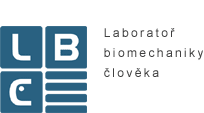
Musculoskeletal system and artificial replacements
Influence of mechanical loading on the onset and development of hip joint osteoarthritis
Project description:
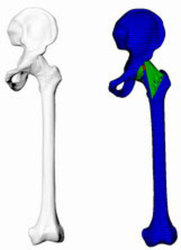
Geometrical and FE model
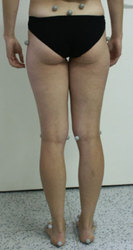
Experimental measurement of the gait kinematics
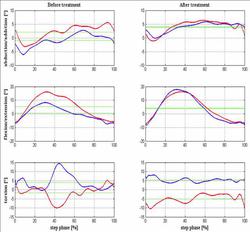
Kinematics of the hip joint during gait before (left) and after (right) physiotherapy treatment. Red line – left leg, blue line – right leg and green line – mean value.
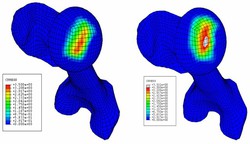
Comparison of the contact stresses exerted in the articular cartilage of both the physiologic (left) and arthritic (right) hip joints.
Ostheoarthritis (OA) can be a group of overlapping pathological statuses, when the balance between degradation and synthesis processes of individual components of the joint cartilage and the subchondral bone is disturbed, and it leads to gradual degeneration of these structures. OA is the most frequent painful degenerative joint disease. It afflicts 12% of the population and after the heart diseases; it is the second most common causes of invalidity of males over the age of fifty. Serious health damage caused by OA represents not only health, but also significant social and economic problem. Preventive attitude to the OA helps timely diagnosis and subsequent treatment of this disease. One of the significant risk factors causing the initiation and development of hip joint OA is the style and quantity of mechanical load on the joint. The pivotal motivation for this work is thus verification of the hypothesis, whether the pathological cycle helping the beginning and development of OA overloading - change of locomotion - overloading, can be stopped or at least partly slowed by suitable change of mechanical load of the joint (locomotive stereotypes). If in the initiation of the OA process the muscular functioning is returned in balance again, the development of OA can be significantly slowed. The return to natural tonic balance can be achieved by suitable exercise and strengthening of the muscular structures. To verify the hypothesis, a number of experimental measurements of walk kinematics, and calculation analysis of hip joint using the Finite Element Method (FEM) were carried out.
doc. Ing. Radek Sedláček, Ph.D.Resesrchers:
Cooperation:
Literature:
- Z. Horák, P. Kubový, M. Stupka, J. Horáková: FE Analysis and Experimental Measurement of the Mechanical Loading Influence on the Onset and Development of Hip Joint Osteoarthritis. Journal of Biomechanics. 40(S2), s. 567., 2007.
- J. Vrána, Z. Horák, J. Michalec: Finite Element Analysis of Human Hip Joint. Inžynieria Biomaterialów. 8(47), s.21-22, 2005.
- Z. Horák, P. Kubový, M. Stupka, J. Horáková: FE Analysis and Experimental Measurement of the Mechanical Loading Influence on the Onset and Development of Hip Joint Osteoarthritis. XXI Congress of ISB 2007, s. 567, Taipei, Tchai-wan, 2007.
- Z. Horák, M. Stupka, J. Martiník, J. Vrána: Influence of Mechanical Loading of Hip Joint During Normal Gait. The 3rd European Medical and Biological Engineering Conference EMBEC´05., Praha, 2005.

